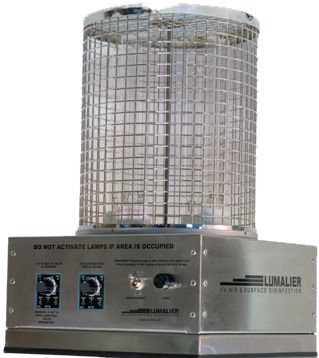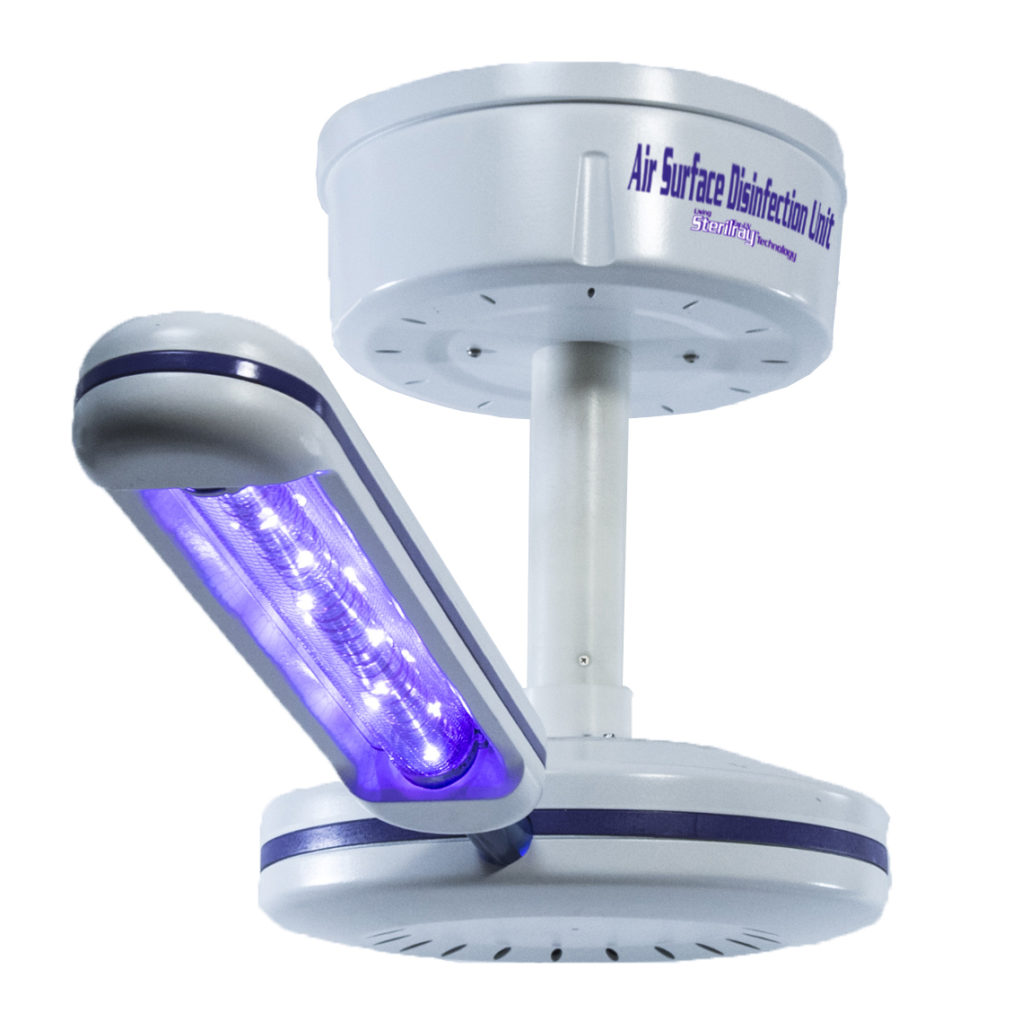UV Surface Disinfection Techniques: Making The Most Of Performance for Germ-Free Spaces
UV Surface Disinfection Techniques: Making The Most Of Performance for Germ-Free Spaces
Blog Article
Using the Possible of UV Disinfection: Safeguarding Health and Health
UV disinfection, a technology widely used in numerous sectors, has shown efficient in eliminating hazardous virus. From comprehending the mechanisms at play to implementing this modern technology in our daily lives, this discussion intends to drop light on the capacity of UV sanitation and its function in securing our wellness and hygiene.
Understanding UV Disinfection
UV disinfection is an extremely reliable and extensively used technique for eliminating damaging pathogens and guaranteeing health and wellness and hygiene. This technique uses ultraviolet (UV) light to inactivate microorganisms by damaging their DNA and stopping them from replicating. UV sanitation is especially reliable against microorganisms, viruses, and other bacteria that can cause infections and illness.
The principle behind UV sanitation is basic yet powerful. When UV light is given off at a specific wavelength, it penetrates the microorganism's cell wall surface and interrupts its genetic material. This process, known as photodissociation, leads to the formation of thymine dimers, which avoid the microbe from duplicating and making it harmless. UV disinfection can be used in different setups, including water therapy plants, health care facilities, food processing markets, and air purification systems.
Among the advantages of UV sanitation is its capability to properly and successfully get rid of a wide variety of virus without the need for chemicals or additives. Unlike other sanitation methods, such as chlorine or ozone, UV sanitation does not introduce hazardous by-products or chemical deposits right into the environment. Furthermore, UV disinfection is a non-contact process, which implies that it does not need physical contact with the bacteria, lessening the threat of cross-contamination.

The Scientific Research Behind UV Sanitation
The effectiveness of UV sanitation lies in its capacity to interrupt the hereditary product of microbes, providing them incapable to reproduce and consequently removing their dangerous possibility. This high-energy UV-C radiation is most efficient in disinfection applications because it can penetrate the cell wall surfaces of bacteria and harm their DNA or RNA.
When microorganisms are exposed to UV-C radiation, the power is taken in by their genetic material, creating bonds to break and developing chain reactions that disrupt their ability to duplicate. This avoids the bacteria from duplicating and spreading out infection. UV disinfection is especially efficient versus microorganisms, fungis, and viruses, including typical microorganisms such as Escherichia coli, Salmonella, and Flu.
The scientific research behind UV sanitation is supported by extensive study and researches. It has actually been shown that direct exposure to an enough dose of UV-C radiation can achieve a high level of sanitation, often surpassing 99.9% efficacy in killing microorganisms. Nonetheless, it is essential to note that the efficiency of UV sanitation depends on numerous elements, including the intensity of UV-C radiation, exposure time, range from the UV source, and the susceptibility of the microorganism to UV radiation.
Applications of UV Sanitation
Provided the considerable research and effectiveness of UV sanitation in interfering with the hereditary product of microorganisms, it is vital to check out the different functional applications of this innovation. UV disinfection has actually verified to be a valuable device in a vast array of industries where keeping a safe and clean atmosphere is crucial.
One significant application of UV disinfection remains in medical care settings. UV light can be used to decontaminate surfaces, tools, and also the air in health centers and clinical centers. This helps to reduce the danger of healthcare-associated infections and makes certain a more secure atmosphere for people and medical care workers.
An additional vital application remains in the food and beverage industry. UV disinfection is utilized to deal with water and remove dangerous virus, such as E. coli and Salmonella, from the production process. uv surface disinfection. This makes sure the security and top quality of the products we take in
UV disinfection is additionally commonly utilized in water treatment plants and wastewater treatment centers. It is an effective method for ruining unsafe bacteria, viruses, and bloodsuckers that can be existing in water resources. This aids to offer tidy and secure drinking water to neighborhoods and secure the setting from air pollution.
Furthermore, UV disinfection is utilized in the pharmaceutical sector to sanitize tools and maintain the integrity of items. It is additionally utilized in laboratories and study centers to avoid contamination and make certain exact results.
Advantages of UV Sanitation Technology
One noteworthy benefit of employing UV sanitation technology is its ability to properly remove microorganisms without making use of severe chemicals. This is specifically helpful in numerous settings, such as health care centers, water therapy plants, and food handling markets, where the existence of dangerous virus positions a significant threat to public health and wellness and safety and security.
Unlike traditional disinfection methods that depend on chemicals like chlorine or ozone, UV sanitation modern technology utilizes ultraviolet light to target and ruin the DNA of microbes, effectively neutralizing their capacity to replicate and create infections. This process not just removes the demand for possibly unsafe chemicals yet likewise reduces the danger of chemical residue or results staying in the treated atmosphere.

Furthermore, UV disinfection modern technology is eco-friendly. As it does not rely upon making use of chemicals, it removes the demand for their disposal, manufacturing, and transportation, reducing the total carbon impact connected with sanitation procedures. Additionally, UV disinfection systems have a longer life additional hints expectancy contrasted to chemical-based techniques, causing less constant replacement and further lowering waste.
Implementing UV Disinfection in Day-to-day Live
To successfully execute UV sanitation in every day life, organizations and people can incorporate portable UV disinfecting gadgets right into their health regimens and cleaning practices. These tools are created to give off ultraviolet light, which has been verified to kill or inactivate a you could try these out wide variety of microorganisms, consisting of bacteria, viruses, and fungi. By making use of portable UV sterilizing tools, individuals can sanitize generally touched things and surfaces, such as mobile phone, doorknobs, keys, and laptop computers, lowering the risk of spreading out bacteria and infections.
Along with integrating portable UV disinfecting gadgets, it is very important to comply with appropriate standards and referrals for reliable UV disinfection. This consists of making certain that the device is used properly and for the recommended duration to achieve optimal sanitation outcomes. It is additionally critical to focus on safety and security measures, such as putting on safety eyeglasses and preventing direct exposure of the UV light to the skin.

Additionally, organizations can execute UV sanitation innovation in numerous settings to boost hygiene techniques. For circumstances, hospitals and medical care facilities can make use of UV disinfection robotics to sanitize individual rooms, running theaters, and other high-touch locations. Food processing markets can integrate UV disinfection systems into their assembly line to boost food safety and security and protect against contamination.
Final Thought
In conclusion, UV sanitation innovation holds wonderful potential in securing health and health. With its various advantages, UV disinfection is a valuable device for maintaining a healthy and tidy atmosphere.
Unlike various other sanitation techniques, such as chlorine or ozone, UV sanitation does not introduce hazardous byproducts or chemical residues into the atmosphere. It is important to note that the effectiveness of UV disinfection depends on numerous factors, including the intensity of UV-C radiation, direct exposure time, distance from the UV source, and the susceptibility of the microbe to UV radiation.
An additional benefit of UV disinfection technology is its ability to give constant and quick sanitation. Unlike manual cleansing approaches, which can be lengthy and need significant labor, UV sanitation systems can be automated and run constantly, making certain constant disinfection without human intervention.To successfully implement UV sanitation in day-to-day life, people link and organizations can incorporate portable UV disinfecting tools into their health routines and cleaning up practices.
Report this page